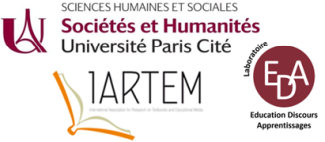According to the 2018 Curriculum Guidelines for 12-Year Basic Education in Mathematics for Vocational Senior High Schools in Taiwan, the educational objectives are broad and dynamic, focusing on developing students' mathematical competence and proficiency, enhancing their ability to use tools and technology effectively, and fostering robust problem-solving skills. This modern approach in vocational senior high school mathematics education is not limited to just understanding mathematical concepts and applying mathematical skills. It progressively moves towards equipping students with the ability to solve real-world and occupational problems. This is achieved by cultivating a deep and flexible understanding of mathematical principles and encouraging the adept application of mathematical tools. The curriculum is designed to bridge theoretical knowledge with practical application, aiming to prepare students for the diverse challenges they might encounter in their professional careers and everyday life, thereby making mathematics education more relevant, engaging, and applicable to various contexts.
Textbook is a necessary element in the implementation of curriculum reform, and its content symbolize the transformation of goals of the idealistic curriculum. The 12-Year Basic Education embodies a paradigm shift in teaching and learning of mathematics, from knowledge-centered learning to cultivating problem-solving in different contexts. The development of student's mathematics learning is not recommended to repeatedly practice similar problems (Gu, Huang, & Marton, 2004), but rather, the number of problems in different contexts should be increased to diversify the content of textbooks, thereby creating and shaping a learning environment conducive to higher-level understanding (Van del Heuvel-Paanhuizen, 1996). In different contexts, it is possible to stimulate and inspire student's flexible problem-solving strategies. There is a positive relationship between providing learning opportunities in diverse mathematical contexts and the academic achievement of students. How do textbooks demonstrate that offering a suitable learning environment to develop diverse problem-solving strategies is a one of the crucial components of curriculum reform. Therefore, it is necessary to explore and understand which contexts of questions are provided by textbooks to facilitate the development of students' problem-solving strategies.
The research, referring to PISA 2022 Mathematics Framework as theoretical foundation and analytical framework, explores the question types and characteristics of mathematics textbooks in vocational senior high school through content analysis. Question is the fundamental unit of composition in mathematics textbooks (Stein, Remillard, & Smith, 2007). The contexts involved in these questions were categorized into personal, social, occupational, scientific, and mathematical. We conducted a detailed categorization, comparison, and analysis of the questions found in 10 different versions of mathematics textbooks in vocational senior high school, systematically examining the content and structure of these educational materials to gain a comprehensive understanding of their approach and emphasis in teaching mathematics.
This research revealed three major findings. At first, in all the versions of the mathematics textbooks analyzed, an overwhelming majority, exceeding 89%, of the questions presented are deeply rooted in a mathematical context. This finding underscores a consistent and significant focus on mathematical scenarios and problem-solving within the framework of these textbooks, highlighting their dedication to emphasizing mathematical concepts and applications. The second observation is that, in nine of the textbook versions, the questions related to personal contexts ranked second in terms of frequency. In just one version of the textbook, the questions involving scientific contexts outnumbered those related to personal situations. The third finding is that in each version of the textbooks, questions related to personal, occupational, and scientific contexts are extremely scarce, with the vast majority of these questions accounting for less than 1% of the total. Moreover, there is one version of the textbook that completely lacks any questions pertaining to occupational contexts. Therefore, we suggest that textbooks should offer questions in a variety of contexts, enabling students to use mathematics to solve problems and enhance their flexible and diverse problem-solving strategies.
Gu, L., Huang, R., & Marton, F. (2004). Teaching with Variation: An effective way of mathematics teaching in China. In L. Fan, N. Y. Wong, J. Cai, & S. Li (Eds.), How Chinese learn mathematics: Perspectives from insiders (pp. 309-345). Singapore: World Scientific.
Ministry of Education. (2018). Curriculum guidelines of 12-year basic education: Language Arts-Mandarin. Taipei, Taiwan: Author.
Organization for Economic Co-operation and Development. (2023). PISA 2022 Mathematics Framework: assessment and analytical framework. Author. https://www.oecd-ilibrary.org/docserver/7ea9ee19-en.pdf?expires=1704117927&id=id&accname=guest&checksum=EDB9563E155337C0F060D951B1127BB8
Stein, M. K., Remillard, J., & Smith, M. S. (2007). How curriculum influences student learning. In F. Lester Jr. (Ed.), Second handbook of research on mathematics teaching and learning (pp. 319-369). Greenwich, CT: Information Age.
Van del Heuvel-Paanhuizen, M. (1996). Assessment and realistic mathematics. Utrecht, The Netherlands: Freudenthal Institute, University of Utrecht.
- Poster

 PDF version
PDF version

